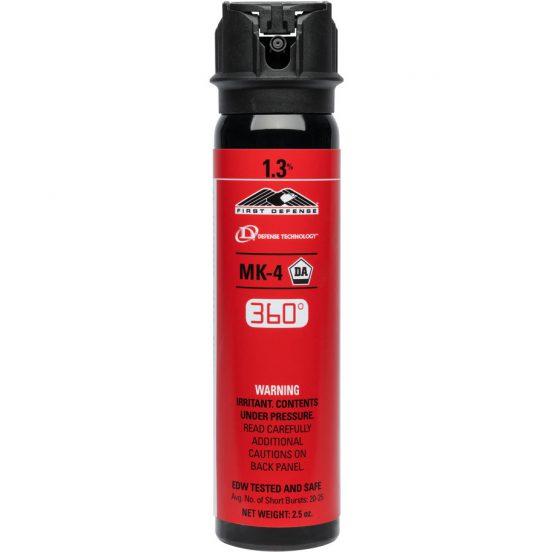Table of Contents
- Gel Pepper Spray Effectiveness and Range Compared to Liquid Form
- Safety Considerations and Usage Tips for Gel versus Liquid Pepper Spray
- Environmental Impact and Residue Differences Between Gel and Liquid Sprays
- Choosing the Right Pepper Spray for Your Needs Based on Situation and Preference
- To Wrap It Up
Gel Pepper Spray Effectiveness and Range Compared to Liquid Form
When scrutinizing the performance of gel pepper spray versus its liquid counterpart, one of the first aspects to consider is accuracy and containment. Gel formulas benefit from a thicker consistency, which allows for a more controlled and precise application. Unlike liquid sprays that can dissipate quickly, gels adhere better to the target, minimizing blowback and reducing the chance of the irritant affecting bystanders. This characteristic makes gel sprays especially effective in windy environments or crowded areas, ensuring that the intended target is impacted rather than the user or innocent passersby.
In terms of range, liquid pepper sprays can generally reach distances of up to 10-12 feet, allowing for a safe separation between the defender and the assailant. In contrast, gel sprays typically offer a slightly shorter effective range, averaging around 8-10 feet, but compensate with better precision and less environmental interference. This trade-off means that while gel may not cover as broad an area, it delivers a more targeted and reliable hit. Key benefits of the gel form include:
- Reduced risk of drift and chemical blowback
- Enhanced sticking power on skin and clothing
- Improved control over spray pattern
- Less environmental as well as secondary contamination risks
Safety Considerations and Usage Tips for Gel versus Liquid Pepper Spray
When handling either type of pepper spray, prioritizing safety is paramount. Gel variants tend to offer more control during deployment, minimizing accidental exposure to bystanders due to their thicker consistency. However, they require steady aim and a closer range to be effective. Liquid sprays, while offering wider dispersal, carry a higher risk of blowback in windy conditions, potentially impacting the user or innocent bystanders. Always test your spray in a safe area to familiarize yourself with its range and spray pattern before relying on it in a critical situation.
In terms of usage tips, keep these best practices in mind:
- Store your pepper spray in an easily accessible location, avoiding extreme temperatures to maintain efficacy.
- Regularly check the expiration date, as the potency can degrade over time.
- For gel sprays, aim directly at the assailant’s face to maximize stopping power with minimal drift.
- For liquid sprays, consider environmental factors like wind to avoid unintentional exposure.
- Wear protective eyewear when practicing deployment drills to prevent accidental irritation.
Environmental Impact and Residue Differences Between Gel and Liquid Sprays
When comparing the environmental footprint of gel and liquid pepper sprays, one striking difference lies in their dispersion and residue patterns. Gel sprays tend to clump and adhere to surfaces more efficiently, minimizing airborne particles that can drift and contaminate unintended areas. This characteristic reduces collateral environmental exposure, making gels slightly more eco-friendly in terms of localized impact. On the other hand, liquid sprays disperse more broadly and can evaporate quickly, increasing the chances of widespread dispersion and residual contamination in the environment.
In terms of residue, gel formulas leave behind a thicker, more noticeable deposit that is easier to clean, often requiring only mild detergents or water. Conversely, liquid sprays leave a more diffuse residue that can penetrate porous surfaces, making cleanup a bit more challenging and potentially harmful to delicate ecosystems, especially aquatic ones. Key considerations include:
- Gel sprays: localized residue, easier cleanup, reduced vapor contamination.
- Liquid sprays: wider spread, evaporative residue, potential for broader environmental impact.
Choosing the Right Pepper Spray for Your Needs Based on Situation and Preference
When selecting pepper spray, it’s essential to consider where and how you plan to use it. For urban environments where wind and close-quarter encounters are more common, gel pepper spray often provides a significant advantage. Its thicker consistency reduces the risk of blowback, making it safer for use in confined spaces or windy conditions. Additionally, gel sprays offer better accuracy and longer reach, allowing you to maintain a safer distance from potential threats. On the other hand, traditional liquid sprays tend to disperse in a wider cloud, which can be beneficial in open or outdoor settings when targeting multiple assailants or creating a temporary barrier is your priority.
Your personal preference and comfort with the spray mechanism also play a crucial role. Some prefer the quick, broad application of liquid sprays, appreciated by those looking for faster coverage, whereas others opt for the targeted application of gel sprays to minimize collateral exposure. Beyond consistency, consider aspects such as size, ease of use, and holster compatibility. Here’s a quick checklist to guide your choice:
- Environment: Urban vs. outdoor settings
- Safety: Risk of blowback or self-contamination
- Range and accuracy: Targeted vs. wide-area effect
- Ease of use: Trigger mechanism and recoil
- Portability: Size and accessibility
To Wrap It Up
In conclusion, choosing between gel and liquid pepper spray ultimately depends on your specific needs and environment. Gel sprays offer greater control and reduced blowback, making them ideal for close-quarters defense, while liquid sprays provide a wider spray pattern for quick deterrence at a distance. Understanding these key differences ensures you select the right option to enhance your personal safety effectively. Stay informed, stay prepared, and always prioritize responsible use when carrying any form of pepper spray.Check Our Other Blogs
- StunGun – Your Trusted Source for Stun Guns, Laws, and Self-Defense Tips
- PepperSprayLaws – Your Trusted Resource for Pepper Spray Information
- StunGunLaws – Your Trusted Guide to Stun Gun Legality and Safety




